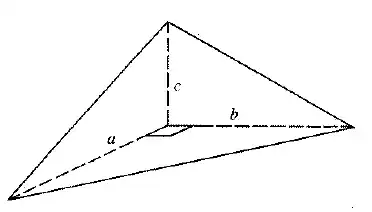Here is a book for most advanced techniques
Advanced integration techniques
Here are some of the methods included in the book.
Laplace Integration
$$\int^{\infty}_0 \frac{f(t)}{t}\,dt=\, \int^{\infty}_0 \,
\mathcal{L}(f (t))\, ds$$
Can be used to show that
$$\int^{\infty}_0 \frac{\sin(t)}{t}\,dt = \frac{\pi}{2}$$
proof
$$\int^{\infty}_0 \frac{\sin(t)}{t}\,dt= \int^{\infty}_{0}\mathcal{L}
(\sin(t))\,ds$$
We know that
$$\mathcal{L}(\sin(t)) = \frac{1}{s^2+1}$$
Just substitute in our integral
$$\int^{\infty}_0 \frac{ds}{1+s^2}= \tan^{-1}(s)|_{s=\infty}-\tan^{-1}
(s)|_{s=0}=\frac{\pi}{2}$$
Convolution
$$\mathcal{L}\left((f * g)(t)\right)= \mathcal{L}(f(t)) \mathcal{L}(g
(t)) $$
to show that
$$\beta(x+1,y+1)=\int^{1}_{0}t^{x}\, (1-t)^{y}\,dt= \frac{\Gamma(x+1)\Gamma
{(y+1)}}{\Gamma{(x+y+2)}}$$
proof
Let us choose some functions $f(t) = t^{x} \,\, , \, g(t) = t^y$
Hence we get
$$(t^x*t^y)= \int^{t}_0 s^{x}(t-s)^{y}\,ds $$
So by definition we have
$$\mathcal{L}\left(t^x*t^y\right)= \mathcal{L}(t^x) \mathcal{L}(t^y ) $$
We can now use the laplace of the power
$$\mathcal{L}\left(t^x*t^y\right)= \frac{x!\cdot y!}{s^{x+y+2}}$$
Notice that we need to find the inverse of Laplace $\mathcal{L}^{-1}$
$$\mathcal{L}^{-1}\left(\mathcal{L}(t^x*t^y)\right)=\mathcal{L}^{-
1}\left( \frac{x!\cdot y!}{s^{x+y+2}}\right)=t^{x+y+1}\frac{x!\cdot y!}
{(x+y+1)!}$$
So we have the following
$$(t^x*t^y) =t^{x+y+1}\frac{x!\cdot y!}{(x+y+1)!}$$
By definition we have
$$t^{x+y+1}\frac{x!\cdot y!}{(x+y+1)!} = \int^{t}_0 s^{x}(t-s)^{y}\,ds
$$
This looks good , put $t=1$ we get
$$\frac{x!\cdot y!}{(x+y+1)!} = \int^{1}_0 s^{x}(1-s)^{y}\,ds$$
By using that $n! = \Gamma{(n+1)}$
We arrive happily to our formula
$$ \int^{1}_0 s^{x}(1-s)^{y}\,ds= \frac{\Gamma(x+1)\Gamma{(y+1)}}{\Gamma
{(x+y+2)}}$$
which can be written as
$$ \int^{1}_0 s^{x-1}(1-s)^{y-1}\,ds= \frac{\Gamma(x)\Gamma{(y)}}{\Gamma
{(x+y+1)}}$$
Series expansion
$$\int^z_0 f(x) dx = \sum_{k\geq 0} a_k \frac{z^{k+1}}{k+1}$$
Can be used to show that
$$\int^\infty_0\frac{t^{s-1}}{e^t-1}dt = \Gamma(s) \zeta(s)$$
proof
Using the power expansion
$$\frac{1}{1-e^{-t}} = \sum_{n=0}^\infty e^{-nt}$$
Hence we have
$$\int^\infty_0\,e^{-t}t^{s-1}\left(\sum_{n=0}^\infty e^{-nt}\right)\,dt$$
By swapping the series and integral
$$\sum_{n=0}^\infty\int^\infty_0\,t^{s-1}e^{-(n+1)t}\,dt = \Gamma(n) \sum_{n=0}^\infty \frac{1}{(n+1)^s}=\Gamma(s)\zeta(s)\,\,$$
Taking Limits
$$\lim_{s \to 0} \int^z_0 t^{s-1} f(t) \,dt = \int^z_0
\frac{f(t)}{t}dt$$
Can be used to prove
$$ \psi(a) = \int^{\infty}_0 \frac{e^{-z}-(1+z)^{-a}}{z}\,dz $$
proof
Introduce the variable
$$\lim_{s \to 0} \int^{\infty}_0 (z^{s-1}e^{-z}-z^{s-1}(1+z)^{-a})\,dz $$
$$\Gamma(s)-\frac{\Gamma(s)\Gamma(a-s)}{\Gamma(a)} = \frac{\Gamma(s+1)}{\Gamma(a)}\left\{\frac{\Gamma(a)-\Gamma(a-s)}{s}\right\}$$
By taking the limit
$$\frac{1}{\Gamma(a)}\lim_{s \to 0}\frac{\Gamma(a)-\Gamma(a-s)}{s} =\frac{1}{\Gamma(a)}\lim_{s \to 0}\frac{\Gamma(a+s)-\Gamma(a)}{s} = \frac{\Gamma'(a)}{\Gamma(a)} = \psi(a)$$
